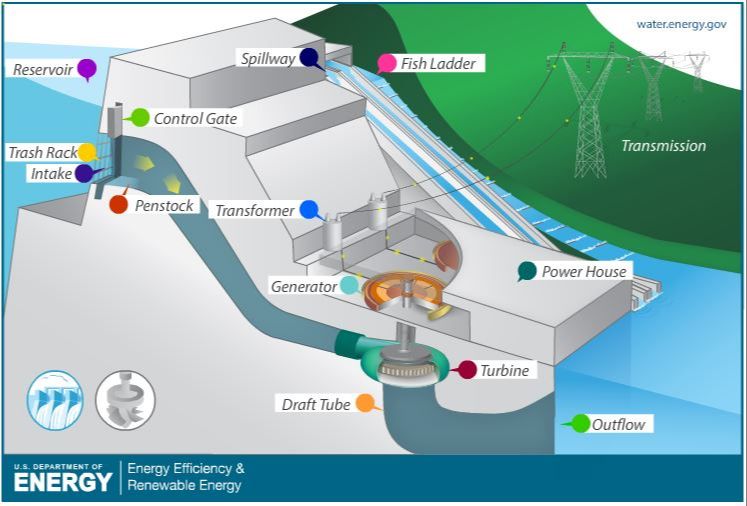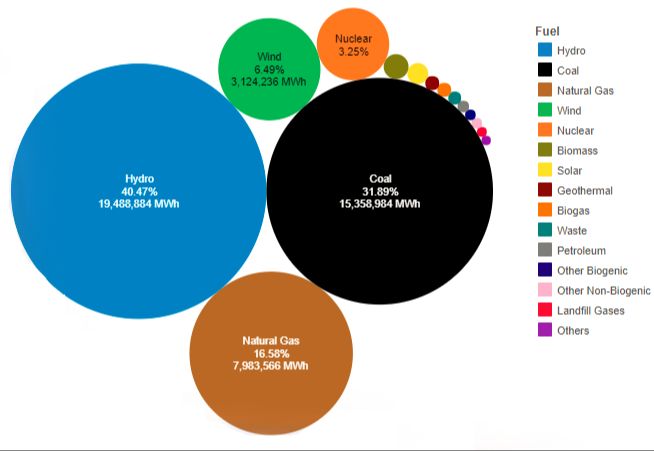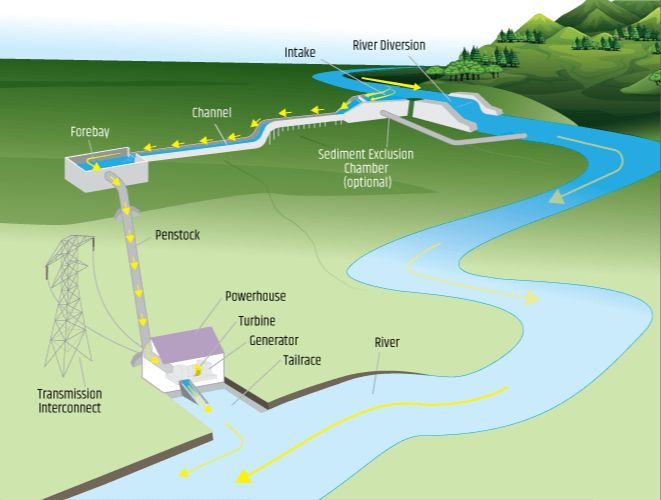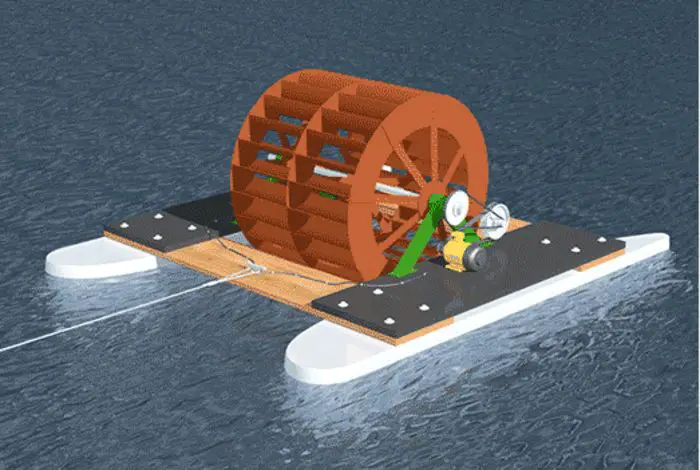Pumped Storage Hydropower Systems
Rising electricity demands and global commitments to curb carbon emissions are driving researchers to explore new types of large-scale energy storage solutions. One technology that deserves renewed attention is pumped storage hydropower (PSH). While we may be familiar with traditional hydropower systems that generate electricity from flowing river water, a pumped storage system actually works in reverse – using electricity to pump water to a higher reservoir, then releasing it to generate power again when needed. PSH has been used commercially for over a century, but advancements in turbine and pump designs now make these systems even more viable. In this post, I will explore the potential of pumped storage hydropower to help balance renewable energy sources on the electric grid. We’ll look at how PSH works, the scale of projects currently operating around the world, and new proposed “closed-loop” systems that could open up locations far beyond dammed river valleys. By understanding more about this under-recognized storage method, perhaps we can accelerate its deployment and leverage PSH’s ability to support wider adoption of clean, variable energy sources.
What Is Pumped Storage Hydropower And How Does It Work?
Pumped storage hydropower (PSH) is a type of energy storage system that uses reservoirs of water to generate electricity, allowing for the flexible management of electricity supply and demand. Unlike traditional hydropower systems that rely upon flowing river water, PSH facilities take advantage of the natural ability of water to store and release energy. PSH systems operate by using electricity during periods of low power demand to pump water from a lower reservoir to a higher reservoir. When electricity demand increases, water is released from the upper reservoir, spinning turbines to generate electricity as it flows back down to the lower reservoir.
This process effectively creates a “battery” of sorts, storing excess energy generated during low-demand periods and releasing it later when needed to meet peak demand. PSH systems can respond quickly to changes in electricity demand, releasing water to generate power in just a matter of minutes. This flexibility in responding to demand changes makes PSH a promising storage solution for balancing renewable energy sources on the electric grid.
The potential for PSH is demonstrated by its existing scale and use around the world. China is currently home to the largest PSH facility in the world, the 3 Gorges power plant, with a capacity of 22.5 GW. In the US, the largest PSH facility is the Bath County Pumped Storage Station in Virginia, with a capacity of 3 GW. The use of PSH has also been expanding to new locations, thanks to proposed “closed-loop” systems that do not rely on damming river valleys. These systems would use water pumped to and from two interconnected reservoirs at different elevations, allowing for energy storage without the environmental impact of damming rivers.
Benefits Of Using Pumped Storage Hydropower Systems
The benefits of using pumped storage hydropower (PSH) systems are plentiful and include advantages for both environmental sustainability and grid stability. PSH systems are a crucial component for balancing renewable energy sources on the grid, where electricity supply and demand must be continuously managed. The advantages of PSH systems are numerous, including the ability to store excess energy during low demand periods, release it during high demand periods, and respond quickly to changes in demand to help stabilize the grid.
PSH systems are also incredibly efficient, with round trip efficiencies ranging from 70% to 90%, meaning that most of the energy put into the system is recovered when it is needed later. This efficiency stems from the ability of water to store and release energy, as well as the advancements in turbine and pump designs that make these systems increasingly viable. The round trip efficiency is one of the reasons why PSH systems are currently the most cost-effective technology for providing long-duration energy storage, and why they will play a crucial role in enabling wider deployment of renewable energy sources like solar and wind power.
Another benefit of using PSH systems is their minimal environmental impact compared to other forms of energy storage. New “closed-loop” PSH systems avoid the need to dam rivers and instead rely on interconnected reservoirs at different elevations, significantly reducing the environmental impact of energy storage. Additionally, PSH systems require no fuel, emit no greenhouse gases or other pollutants, and have a long lifespan of up to 50 years or more, making them an incredibly sustainable energy storage solution.
The potential benefits of PSH systems are not just theoretical, but have already been proven in practice. Projects like the Bath County Pumped Storage Station in Virginia have been providing grid support for decades, contributing to a more stable and reliable electrical grid. As renewable energy sources continue to grow and demand for stored energy increases, PSH systems will continue to play a prominent role in supplying cheap and sustainable energy storage for years to come.
Case Studies Of Successful Pumped Storage Hydropower Projects
Several successful PSH projects have demonstrated the effectiveness and reliability of this energy storage technology. One notable example is the Bath County Pumped Storage Station, located in Virginia, which has a capacity of 3,003 MW and has been in operation since 1985. This facility plays a critical role in maintaining grid stability, particularly during periods of high demand, by providing rapid response to changes in the electrical load. It can start generating power within minutes of receiving a command, making it a reliable and efficient source of energy storage.
Another impressive PSH project is the Ludington Pumped Storage Plant located in Michigan, which boasts a capacity of 1,872 MW and has been in operation since 1973. This facility is unique in that it uses Lake Michigan and Lake Huron as its water source, making it one of the largest PSH projects worldwide that does not rely on river dams for its operation. With a total storage capacity of 27 GWh, the Ludington plant can produce electricity for over 1.7 million households for up to eight hours at full capacity.
Yet another successful PSH project is the Dinorwig Power Station in Wales, which began operations in 1984. The facility has a capacity of 1,728 MW and provides peak power to meet the electricity demands of over 2.5 million households. The facility is also noteworthy for its quick response time when needed, with the ability to start producing power within seconds of receiving a command. The Dinorwig plant has shown that PSH systems can not only provide a reliable source of energy storage, but can also be a valuable asset to mitigate the impacts of renewable energy intermittency by providing fast response and backup power when needed.
These successful PSH projects serve as proof of concept for the tremendous potential of this technology. As turbine and pump designs continue to improve, and new “closed-loop” systems are developed that avoid the need for river damming, PSH is poised to become an even more integral part of the sustainable energy mix. With the ability to store large amounts of energy, provide rapid response times, and operate with a minimal environmental impact, PSH is an excellent solution to address the growing energy storage needs of a world increasingly reliant on renewable energy sources.
Comparison With Other Renewable Energy Sources
Pumped storage hydropower (PSH) stands out when compared with other renewable energy sources. While solar and wind power have experienced rapid growth in recent years, their intermittent nature poses significant challenges for grid stability. PSH offers a reliable solution to this issue, with the ability to provide backup power within minutes of receiving a command.
In terms of energy storage capacity, PSH is also impressive. While battery storage is often touted as a key solution, its storage capacity is limited compared to PSH. The Dinorwig Power Station in Wales, for example, has a storage capacity of 9.1 GWh, while the Bath County Pumped Storage Station has a storage capacity of 24 GWh. In comparison, the world’s largest battery storage facility, the Hornsdale Power Reserve in Australia, has a capacity of just 129 MWh.
Another advantage of PSH is that it has a minimal environmental impact. While hydropower dams can have a negative impact on fish populations and river ecosystems, closed-loop PSH systems avoid these issues. In contrast, wind turbines and solar panels can have a significant impact on local wildlife and ecosystems, particularly in areas with high biodiversity.
Overall, while there is no one-size-fits-all solution for sustainable energy storage, PSH has a unique set of advantages that make it an attractive option for grid stability and energy storage. With ongoing advancements in turbine and pump designs, as well as the development of new closed-loop systems, PSH is well-placed to play an increasingly important role in the transition to a clean, reliable, and sustainable energy system.
Potential Challenges And Solutions For Implementing Pumped Storage Hydropower
Despite the numerous benefits of pumped storage hydropower, there are still potential challenges that must be addressed and overcome in order to fully implement the technology.
One significant challenge is identifying suitable locations for new PSH systems. Traditional PSH systems require a significant difference in elevation between the upper and lower reservoirs, limiting potential sites to areas with nearby mountains or steep terrain. However, new advanced closed-loop systems have been developed that utilize underground reservoirs, offering a solution to this challenge. These systems have the potential to be implemented in a wider range of locations, including coastal areas and flat terrains.
Another challenge is the high initial cost of building a PSH system. The construction of an upper and lower reservoir, as well as the installation of turbines, pumps, and additional infrastructure, can be expensive. However, the long lifespan of PSH systems, with a potential operational lifetime of 50 years or more, often offsets these initial costs over time.
Additionally, there may be concerns regarding the impact of PSH systems on local communities and ecosystems. While closed-loop systems largely avoid environmental concerns, traditional PSH systems can still pose a risk to fish populations and river habitats. It is crucial to carefully evaluate potential sites and implement mitigation strategies to minimize any negative impacts on local communities and ecosystems.
Furthermore, the successful operation of a PSH system also relies on effective grid management. Coordinating the use of PSH systems with other sources of renewable energy, like solar and wind power, is necessary to optimize the use of different energy sources and minimize the intermittency of renewable sources. Additionally, managing the energy demand for peak periods is crucial to maintain grid stability and ensure efficient energy use.
Despite these challenges, PSH remains a promising energy storage technology with significant potential to contribute to a sustainable energy system. Continued technological advancements and strategic planning can help to address potential challenges and accelerate the deployment of PSH systems to support renewable energy adoption and grid stability.
How Can Communities Get Involved In Supporting These Systems?
Communities can play an important role in supporting the implementation and operation of pumped storage hydropower (PSH) systems. One way for communities to get involved is by promoting the deployment of closed-loop PSH systems that have minimal environmental impacts. This could involve engaging with local government officials to ensure that proposed PSH systems are evaluated with consideration to potential environmental impacts and that mitigation measures are implemented to reduce negative impacts on communities and ecosystems.
Another way for communities to support PSH systems is by participating in the planning and design process. This could involve providing feedback on proposed project sites, suggesting alternative locations, and working with energy stakeholders to develop a plan for grid management and energy demand that incorporates PSH with other renewable energy sources.
Communities can also play a role in promoting public education and awareness of the benefits of PSH systems. Many people may not be familiar with this technology, its potential benefits, or how it can be used to support renewable energy uptake and grid stability. By educating the public and promoting greater awareness, communities can help to build support for PSH deployment and accelerate the transition to cleaner energy sources.
Finally, communities can also support the financing and development of PSH systems through various channels. For instance, local governments could explore the use of public-private partnerships to finance PSH projects, or utilities could offer incentives or rebate programs to encourage customers to support PSH deployment. There may also be opportunities for community members to invest in PSH projects directly, either through crowdfunding or other investment channels.
Exploring The Future Potential And Advancements In Pumped Storage Hydropower Technology
As electricity demands continue to rise and the need for clean, renewable energy becomes more pressing, researchers are exploring novel energy storage solutions. Pumped storage hydropower (PSH) is an under-recognized and underutilized storage technology that has the potential to revolutionize our ability to balance renewable energy sources on the electric grid. While PSH has been used commercially for over a century, advancements in turbine and pump designs have made these systems even more viable and efficient.
Traditionally, PSH works by using excess electricity to pump water to a higher reservoir, which is then released to generate power again when needed. However, new proposed closed-loop systems remove the need for a natural water source, opening up the possibility of PSH in areas far beyond dammed river valleys. These closed-loop systems work by using two separate reservoirs at different elevations and pumping water between the two. This technology could potentially convert abandoned mines and quarries into giant batteries for storing energy, repurposing these areas for renewable energy generation.
One such example of an innovative PSH project is the proposed 200MW Glyn Rhonwy pumped storage scheme in Wales. It would use two existing slate quarries as the lower and upper reservoirs and pump water between them to generate electricity. This project demonstrates the adaptability and potential of PSH technology, with the ability to repurpose existing infrastructure, reduce costs, and minimize environmental impacts.
Furthermore, PSH technology has the potential to play a critical role in the integration of intermittent renewable energy sources, such as wind and solar, into the grid. These sources have variable output, making them hard to predict and harder to integrate into the grid. PSH, however, can provide a flexible and reliable backup system that can balance out these fluctuations and ensure a stable electricity supply.
Innovations in PSH technology are crucial in order to maximize the full potential of this underutilized storage technology. For instance, the development of new types of turbines – such as variable-speed and reversible-pump turbines – could increase efficiency and storage capacity. Additionally, there are opportunities to integrate PSH with other storage technologies, such as battery storage and compressed air energy storage, to create hybrid systems that combine the benefits of multiple storage technologies.
Overall, the future of pumped storage hydropower is promising. As we continue to work towards a clean energy transition, PSH has the potential to play a crucial role in supporting renewable energy uptake and grid stability. By promoting innovation, investment, and public awareness, we can accelerate the deployment of PSH technology, and maximize its potential to create a more sustainable, reliable, and affordable energy future.
Conclusion
In conclusion, we have delved into the world of pumped storage hydropower and uncovered its multifaceted benefits. As we have learned, this renewable energy source holds immense potential in meeting our ever-growing energy demands while also mitigating environmental impact. Through case studies of successful projects around the world, we have seen how pumped storage hydropower has already made a significant impact in providing clean, reliable and affordable energy. While it may face challenges such as high upfront costs and limited geographic availability, advancements in technology and community support can help overcome these obstacles. And speaking of community support, let’s not forget about the role we can all play in advocating for the implementation of more pumped storage hydropower systems. By educating ourselves and others about its advantages and supporting legislation that incentivizes its development, we can make a difference in shaping a sustainable future for generations to come. As we look to the future, there is no doubt that pumped storage hydropower will continue to evolve and contribute significantly to our global efforts towards a greener tomorrow. So let’s embrace this innovative technology and work towards harnessing its full potential for a cleaner and brighter future.







